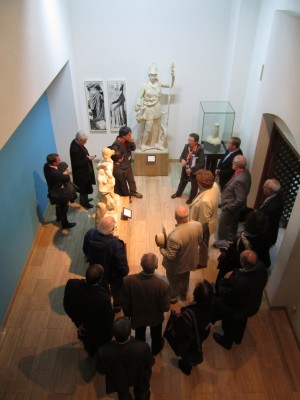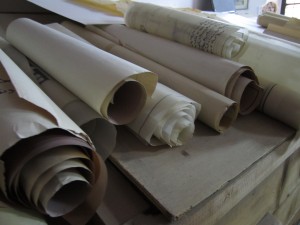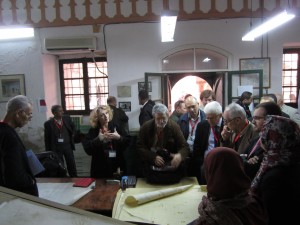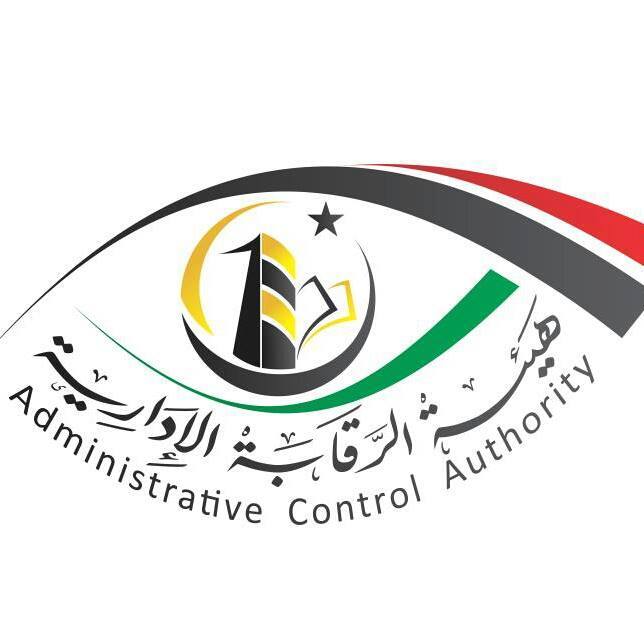By Tom Westcott.

Tripoli, 10 February 2013:
With five UNESCO world heritage sites and numerous archaeological remains, Libya has a rich history and . . .[restrict]countless artefacts that need to be protected.
A group of top international archaeologists and heritage professionals is in Tripoli for a series of workshops on how to bring some six thousand years of history into the digital age, to protect and preserve it for future generations.
The four-day series of discussions, bringing selected professionals with specific expertise together to exchange knowledge and ideas, is the first step towards deciding how best to digitalise Libyan culture and history.
“We were basically told by UNESCO that we need to stop digging and start protecting,” Dr Adel Al-Turki from the Department of Antiquities told the Libya Herald.
“During the war we discovered that Libya really has poor human resources compared to its size,” he said. “We need to build our capacity to look after these sites and learn about the importance of conservation and preservation but, before we can do that, we have to educate people, teach them how important our heritage is.”
The Minister of Culture, Dr Habib Al-Amin, gave the keynote address. He emphasised the importance of collaboration with visiting archaeological missions, to help preserve Libya’s heritage. Although Al-Amin stressed that international expertise was essential to helping Libya move forward in terms of its archaeology, and the sites were of international importance, the priorities should always be Libyan.

Dr Hafed Wada, a research fellow at King’s College in London, told the Libya Herald that heritage professionals in Libya had “high hopes” that the sector would be well-supported by the Minister of Culture, who is himself an archaeologist.
Wada said that he was very happy to report that the country’s heritage sites had sustained only limited damage during the revolution. However, the conflict was not the only threat to historic sites. He pointed out there had been post-war “clandestine excavations” at Algalaa and Umm Shuga, where people have used industrial machines to look for Qaddafi-era gold.
He also described the recent damage to Sufi shrines in Tripoli, which he described as “a tragic loss of heritage based on misplaced ideologies.”
Wada showed an impressive series of photos, from the ruins of Leptis Magna to the cave paintings of Tadrat Acacus. He said that these helped to illustrate not only Libya’s impressive heritage, but also the size of the problem the country faced when thinking about how to protect its treasures.
“We have to work hard to protect heritage neglected for forty years,” Wada said, “and we need to fill the gap by using technology.”
He said Libya needed to develop a framework for promoting and protecting its heritage, including the management of its cultural heritage. “We also need to encourage local communities to look after their own culture,” he added.
As well as the presentations, there was a visit to both the photographic archives and the map room at the Department of Antiquities at the Red Castle. There, participants were shown priceless photographs and valuable maps, kept in storage conditions which leaves them vulnerable to decay.

Curator Feryal Sharfeddin explained that many maps in the collection were in poor condition and in desperate need of conservation, stored in an historic building that itself has not been well looked after. She said that a digital database would help preserve the collection, although she added that some of the oversized maps would be extremely difficult to copy.
The afternoon was spent in the National Museum, where experts shared their knowledge about Libyan prehistory as well as the many ancient Greek and Roman artefacts the museum houses.
The event is being sponsored by the World Bank. [/restrict]







